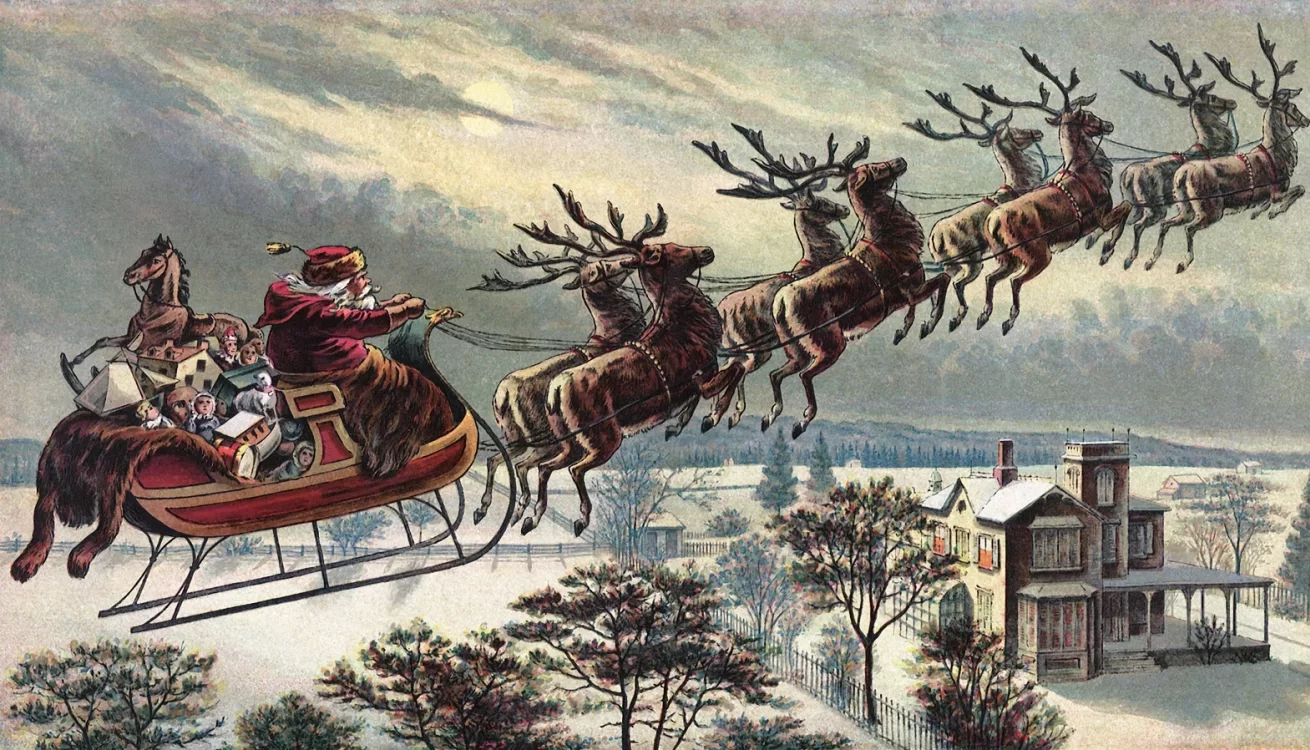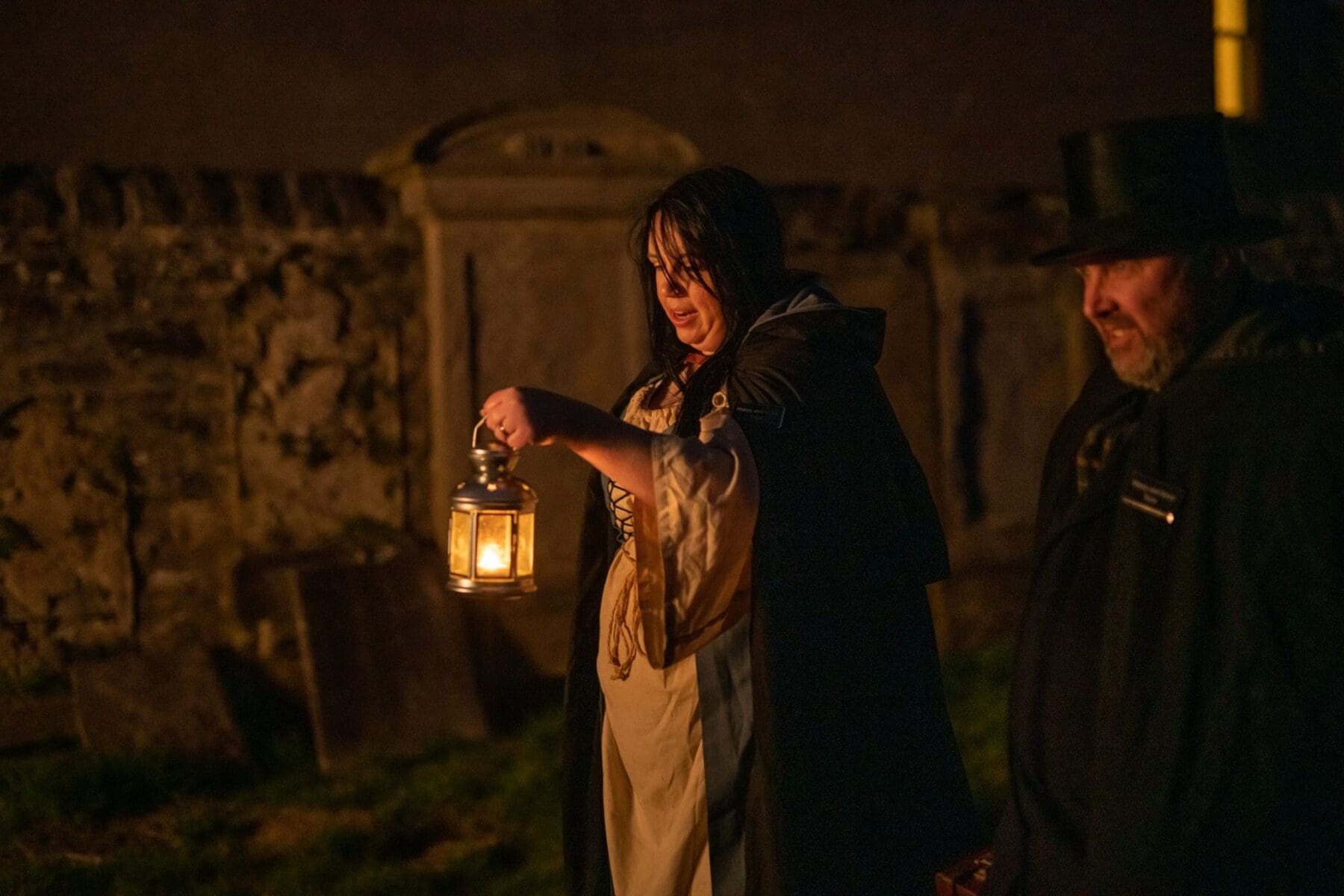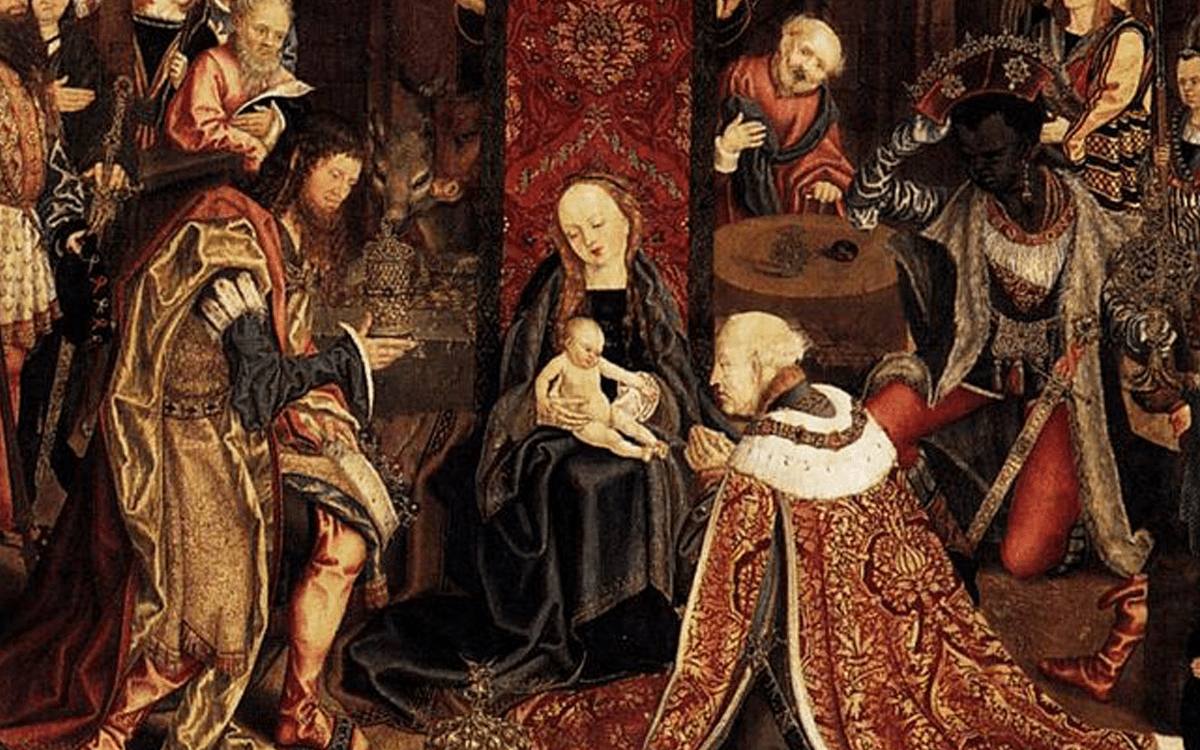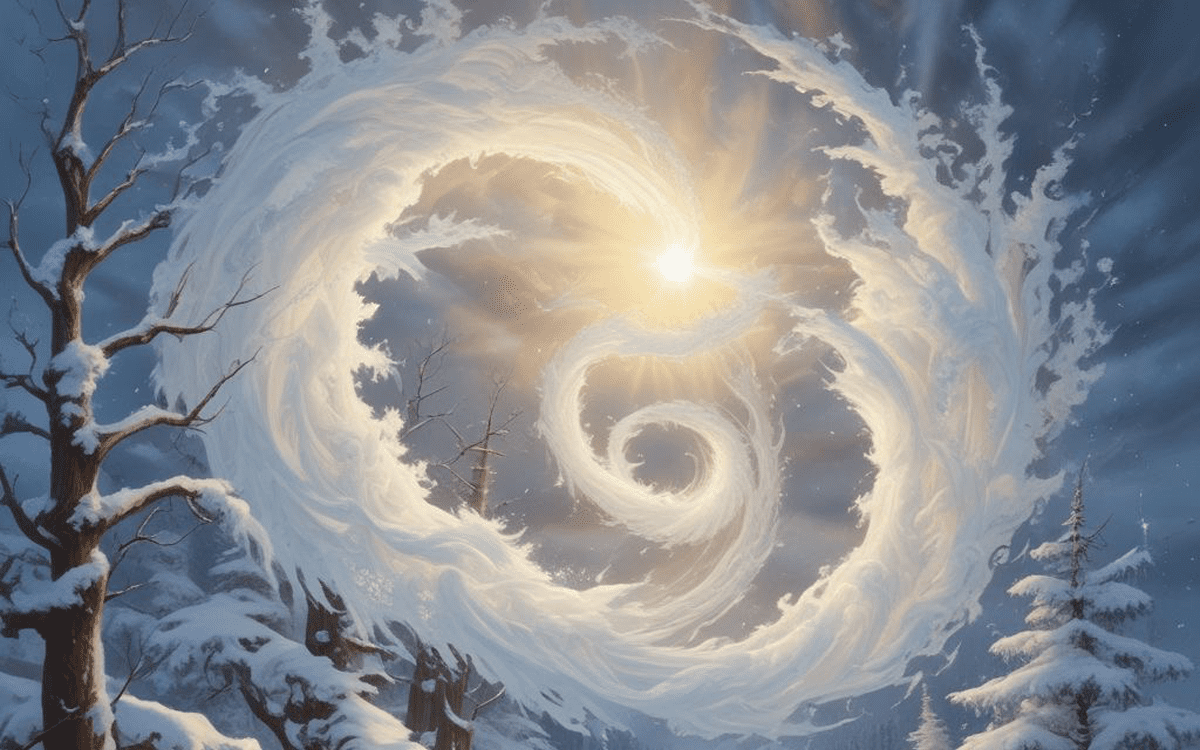From Viking History to Coca-Cola: Santa Claus and Unique Travel Experiences
Santa Claus, the cheerful gift-giver we know today, has a history spanning centuries, shaped by folklore, religion, and pop culture. While his modern red suit is iconic, Santa’s wardrobe—and his story—has changed over time, reflecting the traditions and beliefs of different eras. From his beginnings in Viking history as Odin to his transformation into the Coca-Cola Santa, this tale offers a unique glimpse into the evolution of Christmas. For those seeking unique travel experiences steeped in history, Santa’s journey is as inspiring as it is festive.
Odin: Santa’s Roots in Viking History
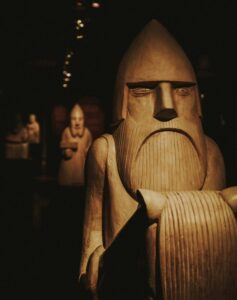
Odin the All-father from Norse mythology
Long before Santa was imagined with sleighs and reindeer, his origins can be traced to Odin, the chief god in Norse mythology. During the Viking-era Yule celebrations, Odin was believed to ride his eight-legged horse, Sleipnir, across the skies. Carrying gifts for those who honored him, Odin’s role during winter laid the foundation for many aspects of Santa Claus.
Odin’s long, flowing beard, his association with the sky, and his mystical journeys through the frozen north offer fascinating connections to Santa’s story. Exploring Viking history in places like Norway or Iceland provides insights into these ancient myths and how they influenced later holiday traditions.
St. Nicholas: A Saint of Generosity
Long ago, in the bustling seaside town of Myra—what we now call modern-day Turkey—there lived a man whose compassion would echo through the centuries. His name was Nicholas, a humble bishop known not for power or wealth but for his extraordinary generosity and kindness.
The most famous tale of Nicholas begins quietly, like all great legends do. In a small, candlelit home lived a poor man with three daughters. In those days, having no dowry—a gift of money or goods to secure a good marriage—meant these young women faced a grim future of hardship and servitude. The man, full of sorrow and shame, feared for his daughter’s fate.
One cold night, as the streets lay silent and the lamps burned low, Nicholas passed by the home. Whether guided by faith or simple kindness, he knew he could not stand idly by. The next morning, the family awoke to find something miraculous: a small pouch of gold, hidden inside one of the daughters’ stockings, which had been hung by the fire to dry. Who had left it? No one knew. Yet, the gold was enough to secure her dowry—and her future.
This act was repeated twice more, each time saving another daughter. On the third night, the father waited, eager to discover the benefactor who had changed their lives. When he saw Nicholas, the bishop begged him to reveal why he gave so generously. Nicholas merely smiled, asking him to keep the secret, for true kindness needs no reward.
This small, quiet act gave birth to a tradition still alive today. The story of gold coins hidden in stockings has transformed over centuries into the cherished practice of hanging stockings by the fire, awaiting gifts on Christmas Eve.
Nicholas himself was often depicted in robes of brown or green, colors that reflected his humility and connection to the earth. As his legend spread across Europe, he became more than a bishop—he became a symbol of hope, generosity, and selflessness. From the Netherlands to Germany, from England to Italy, his story inspired gift-giving traditions that merged faith with holiday joy.
For those who want to trace the footsteps of this beloved saint, his legacy is alive in remarkable places. In Myra, now a quiet corner of Turkey, you can visit the ruins of the Church of St. Nicholas, where his memory lingers in the stones and arches. Or, journey to Bari in southern Italy, where his relics were brought centuries ago and are still venerated in the Basilica di San Nicola. Standing in these ancient spaces offers unique travel experiences, connecting modern pilgrims with the enduring spirit of the man who inspired Santa Claus.
Father Christmas: The Merrymaker
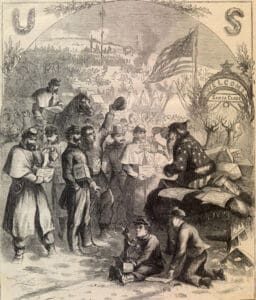
January 3, 1863 cover of Harper’s Weekly, one of the first depictions of Santa Claus.
In medieval England, Santa Claus merged with Father Christmas, a figure tied to feasting and merriment during winter celebrations. Father Christmas often wore green or brown robes, reflecting his connection to nature and the changing seasons. Unlike St. Nicholas, his role was less about morality and more about spreading cheer.
This version of Santa represents the joyful, communal aspects of the holiday season, emphasizing warmth and celebration over strict discipline.
Santa’s Wardrobe: Blue, Brown, and Red
Before Santa’s red suit became iconic, he was depicted in a variety of colors. In early European folklore, his clothes often reflected the earthy tones of brown or green, symbolizing his ties to nature. In some depictions, particularly in Germany and Scandinavia, Santa also wore blue, representing the icy winters of his mythical world.
By the 19th century, as Santa gained popularity in America, illustrators like Thomas Nast began experimenting with his image. Nast’s Santa, published in Harper’s Weekly, frequently wore red, but he was also shown in other colors, including tan and blue. This fluid wardrobe reflected the evolving artistic interpretations of Santa during this era.
Ready to plan an adventure of your own this Winter? Start planning the experience of a lifetime HERE!
To keep up with our blog and other Mysterious Adventures offers, sign up for our newsletter HERE!
The Coca-Cola Santa: How Red Became the Color of Christmas
By the early 20th century, Santa Claus had already taken on many forms—a wandering gift-bringer, a humble bishop, a jolly figure in robes of green, brown, or even blue. But in the 1930s, Santa took a bold step into the modern world, dressed in the now-familiar red suit that would cement his place as a global icon.
This transformation came not from folklore or ancient myth, but from the clever brushstrokes of a commercial artist named Haddon Sundblom. Commissioned by Coca-Cola to create advertisements that would capture the warmth of the holiday spirit, Sundblom reimagined Santa as a plump, rosy-cheeked figure brimming with cheer. His red suit, trimmed in snowy white fur, perfectly matched Coca-Cola’s vibrant branding, while his twinkling eyes and hearty smile felt as familiar and comforting as a roaring fire on a cold winter night.
It wasn’t as though Santa had never worn red before—earlier depictions sometimes showed him in crimson robes—but Sundblom’s Santa was different. He was humanized. Gone was the stern or shadowy figure of old stories; this Santa laughed easily, held a bottle of Coke like an old friend, and exuded warmth and kindness. He wasn’t a myth lurking in snowy woods or skies—he was a jolly visitor, coming straight into the homes and hearts of families around the world.
The ads were an instant success. Appearing in magazines and billboards from the United States to Europe, Sundblom’s Santa quickly became the Santa Claus. People didn’t just see him as a character tied to Coca-Cola—they saw him as Christmas itself. His joyful image spread far and wide, creating a version of Santa that transcended borders and languages.
In a sense, Sundblom gave Santa Claus his final form, a gift to the modern world. What began as Odin’s shadowy rides through the night and St. Nicholas’s quiet acts of kindness had now become a symbol of global holiday cheer. For travelers and curious minds, Santa’s journey is a remarkable tale of transformation—one that combines myth, art, and clever marketing into a single, end
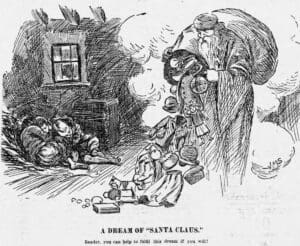
Cartoon by JM Staniforth. November 5, 1898.
uring image.
To see this legacy come to life, visit archives and exhibits that showcase Sundblom’s original artwork or explore Coca-Cola’s holiday history, where the red-suited Santa continues to charm new generations. These moments offer more than nostalgia—they provide unique travel experiences that remind us how imagination can shape the world’s most beloved traditions.
Santa and the Supernatural
Throughout his many transformations, Santa has retained a touch of the supernatural. Whether riding Sleipnir through Viking skies, performing miracles as St. Nicholas, or flying with reindeer across snowy landscapes, his story blurs the line between myth and magic. Santa’s ability to travel the world in a single night, his bottomless bag of gifts, and his timeless presence add a sense of mystery and adventure to the holiday season.
Traveling Santa’s Path: Unique Travel Experiences
For those intrigued by Santa’s rich history, visiting the places tied to his evolution offers unforgettable and unique travel experiences:
- Norway and Iceland: Explore the Viking roots of Santa through Odin’s myth, delving into Viking history and Yule traditions.
- Myra, Turkey: Walk the streets where St. Nicholas lived and learn about his acts of kindness that inspired the modern Santa.
- England: Discover the traditions of Father Christmas by exploring historic winter festivals and markets.
- Bari, Italy: Visit the Basilica di San Nicola, where the relics of St. Nicholas are enshrined, offering a spiritual and historical connection.
These destinations bring Santa’s story to life, combining unique travel experiences with a deep appreciation for the cultural and historical roots of Christmas.
A Timeless Legend
Santa Claus has evolved from Odin’s shadowy rides to the beloved Coca-Cola icon we know today, adapting to the beliefs and traditions of countless cultures. Whether he wears brown, blue, or red, Santa remains a symbol of generosity, mystery, and joy.
This holiday season, as you see Santa’s familiar figure in shop windows or hear his jolly laughter in movies, remember the centuries of history that shaped him. His story, steeped in Viking history and supernatural charm, continues to remind us of the magic that lives in every act of giving.
Embark on a mysterious adventure with us!
Explore divinely selected places, where enigma thrives in every corner. From lands vibrating with mystique to ancient realms echoing with phantom tales, our Mysterious Adventures await. Join the journey and unravel the secrets of the extraordinary.

